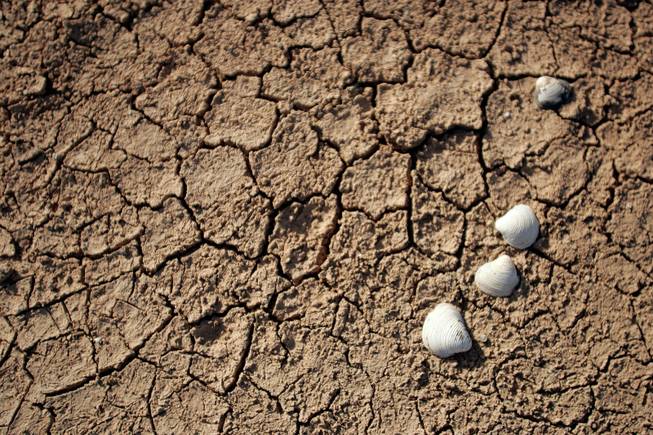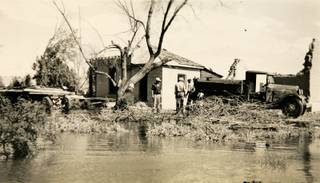
Asian clam shells dot the site of the lost town of St. Thomas. The clam, an invasive species, arrived during the 1960s.
Tuesday, July 7, 2009 | 2 a.m.

Sun Topics
Dry Town, Dry Future
For 60 years, the town of St. Thomas lay beneath the waters of Lake Mead. In 2002, St. Thomas re-emerged from the shrinking lake and scientists don't expect the site to ever be under water again. St. Thomas's appearance offers further evidence of the Southwest's critical water problem. Lake Mead is one of the largest reservoirs in the world and one of the most important water sources in the western United States, however, over the past few years scarce rain and snow amounts have lowered the lake's water levels significantly. According to researchers at Scripps Institution of Oceanography, there is a 50 percent chance Lake Mead will be dry by 2021 if climate changes continue as expected and future water usage is not curtailed.
The shells are the carcasses of Asian clams abandoned by the retreating lake.
No one knows exactly how the freshwater bivalve mollusks, which are native to southern and eastern Asia and Africa, got here. But experts say they arrived in the 1960s and their best guess is they were unintentionally transported here by boaters.
They were first spotted in U.S. waterways nearly 100 years ago and have been spreading ever since.
Although the clams are undoubtedly an invasive species, they rank below the newly arrived quagga and zebra mussels on the Lake Mead Most Wanted list.
The Asian clam “isn’t as destructive as the quagga and zebra mussels since it doesn’t attach itself to boats and in-water infrastructure,” Lake Mead National Recreation Area spokesman Andrew Munoz said in an e-mail.
Sun Archives
- Is it legal to shoot a firearm anywhere in the deserts around Las Vegas? (6-30-2009)
- When will I get my property tax bill? (6-23-2009)
- Where did the Swim-In Pool Supply Co. sign go? (6-18-2009)
- Where does the water for The Lakes come from? (6-9-2009)
- What does the neon 'DST' sign mea at the top of the California? (6-2-2009)
- Why does NV Energy need to assign customers a 19-digit account number? (5-26-2009)
- Is the Las Vegas Valley Water District still looking for water wasters (5-19-2009)
- What's the speed limit on Lake Mead? (5-12-2009)


Join the Discussion:
Check this out for a full explanation of our conversion to the LiveFyre commenting system and instructions on how to sign up for an account.
Full comments policy